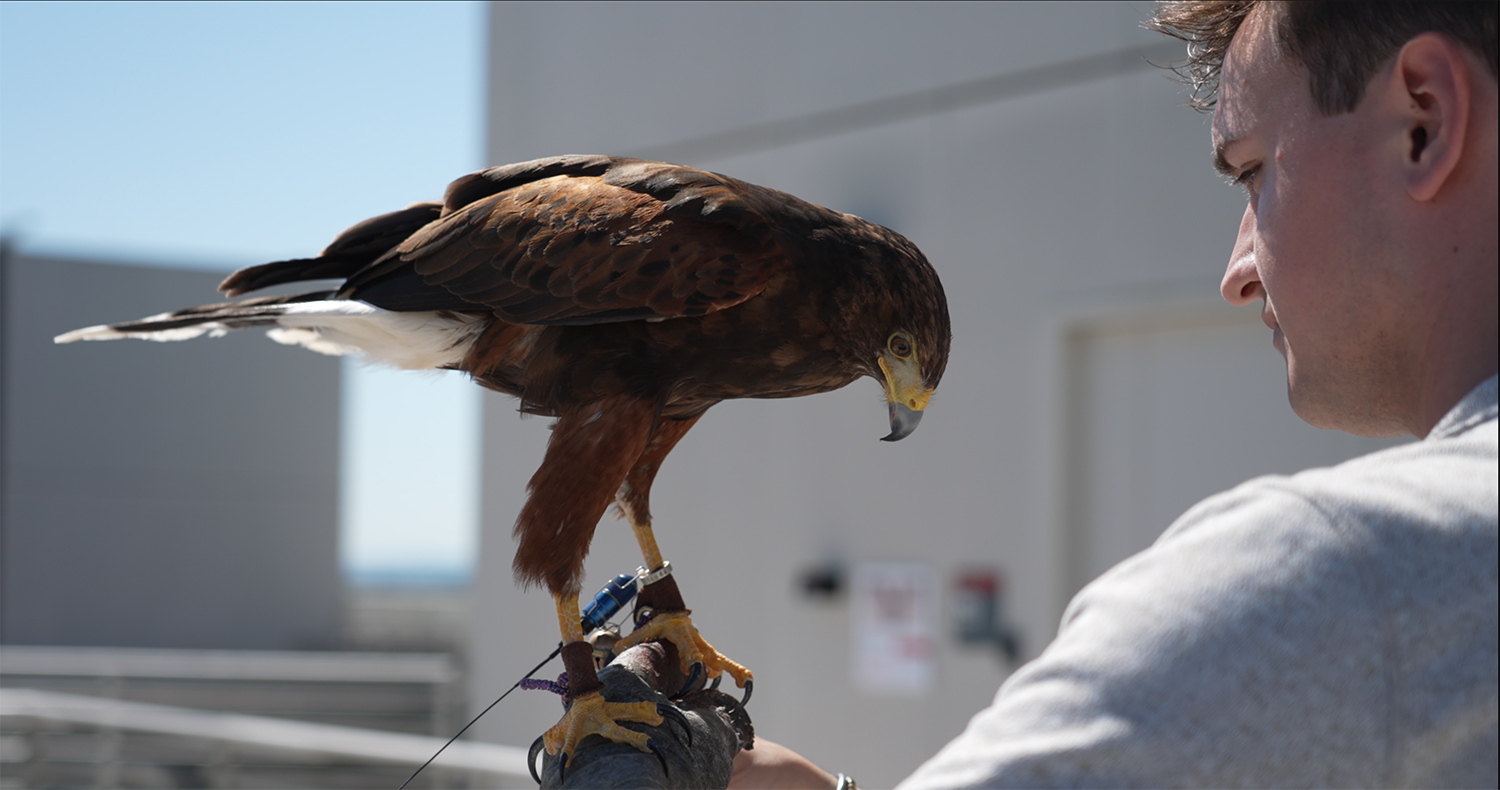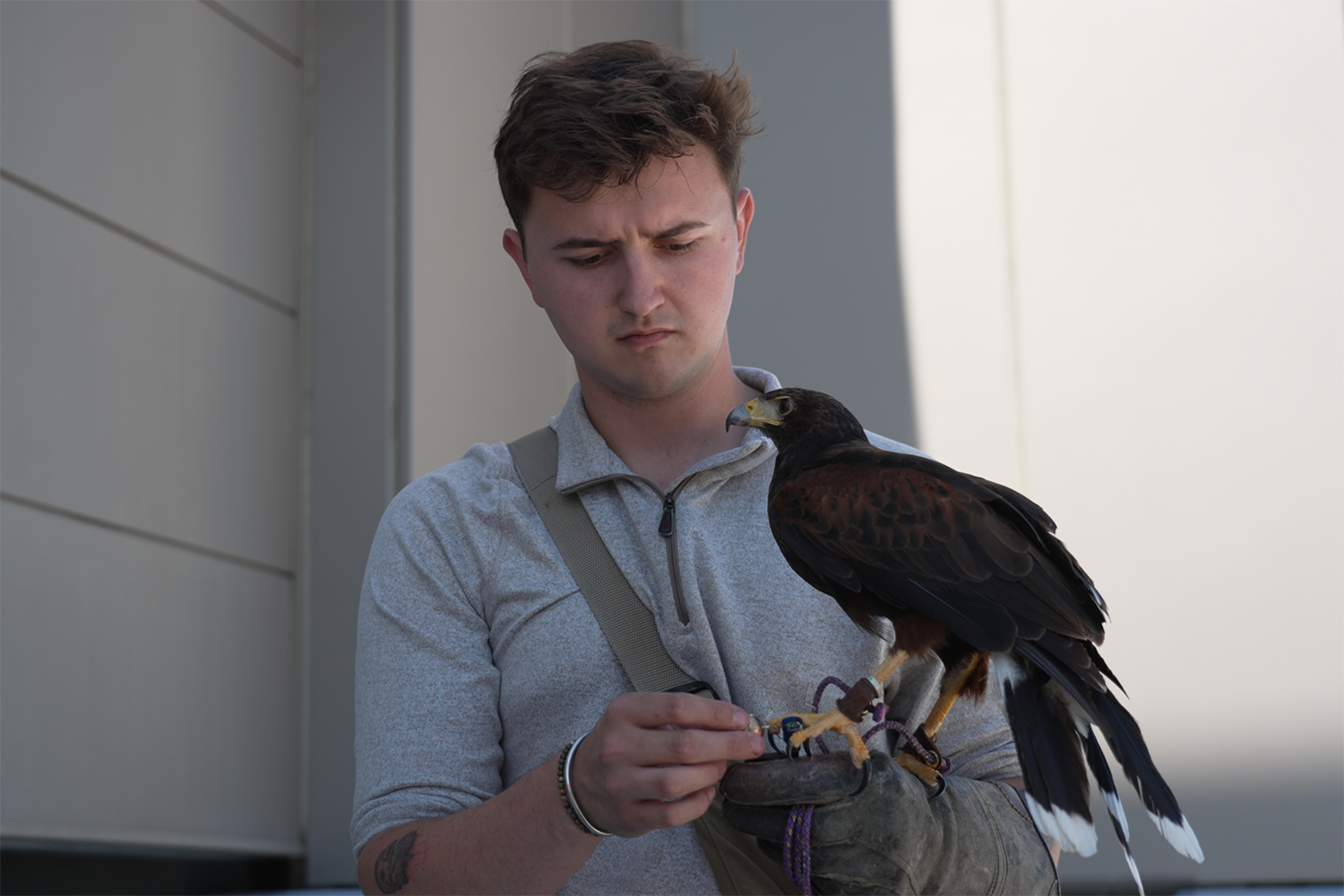This spring, Stanford Health Care had an unusual predicament that required an equally unusual response. The Facility Field Services team at Stanford Hospital discovered that pigeons nesting within rooftop HVAC systems had begun to compromise the cold-water chillers that help regulate air temperature and quality inside the building. The solution had to be effective, sustainable, and eco-friendly. Enter abatement falconer Austin Isgitt.
Isgitt developed an interest in birds from a young age. He turned that personal passion into his professional expertise by passing stringent tests and finding a mentor to help him master the craft. His unique set of skills came into focus when Stanford was grappling with the challenging task of finding a green, inventive answer to the pigeon problem while ensuring efficient hospital operations.
Abatement falconry is the use of trained birds of prey, specifically raptors, to deter or abate unwanted birds or pests from a specific area. It’s an eco-friendly and humane pest-control method often used in urban areas or large property venues.

Isgitt starts his day at 5:30 a.m., meticulously weighing and feeding his birds. “Weight management is crucial for the bird’s motivation to work,” Isgitt said. “It takes a lot of time and commitment to make sure the birds are staying healthy, and they are on weight so they can fly [at their best].”
Isgitt travels throughout the Bay Area, often spending multiple hours in transit. He and his feathered partners are at Stanford Health Care twice a week, with each visit spanning about two hours.
The mere presence of these avian predators is often enough to scare away the pigeons and deter them from nesting in the hospital’s essential machinery and equipment. This unique application of the birds’ instinctive behavior patterns showcases how nature can provide resourceful solutions to everyday problems.
Being an abatement falconer isn’t just about managing birds – it’s about skillful navigation of complex, ever-changing factors.”Austin Isgitt
A successful deployment of the feathered predators over Stanford Health Care’s grounds is the result of meticulous training for both the human and the raptor. “Each flight over an urban landscape presents unique challenges, from dodging power lines to avoiding buses and helicopters,” Isgitt said. “It’s important to have a quick response from my birds so they will not hesitate to come back to me if I notice a hazard. Being an abatement falconer isn’t just about managing birds – it’s about skillful navigation of complex, ever-changing factors.”
The sight of Isgitt with his feathered predators almost always turns heads, a reflection of the keen interest people show in what he does. His abatement falconer duties often include answering questions from curious passersby.

Isgitt turned his interest in falconry into his professional expertise by passing stringent tests and finding a mentor to help him master the craft. | Liam Stimpson
Isgitt’s work supports Stanford Medicine’s core value – patient safety. The pigeons, if left unchecked, could pose significant biohazards to patients, staff, and hospital facilities. Not only does Isgitt’s intervention prevent these risks, but it also saves the hospital substantial sums that would otherwise be spent on cleaning up bird refuse.
Inspired by Isgitt’s success, other Stanford Medicine sites – including Stanford Health Care Tri-Valley and Cancer Center South Bay – are considering similar strategies.